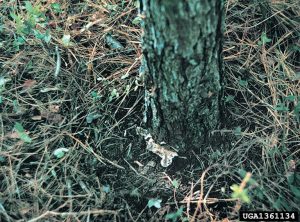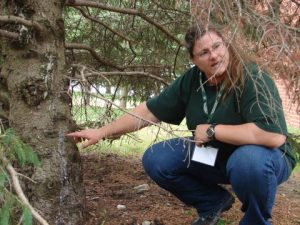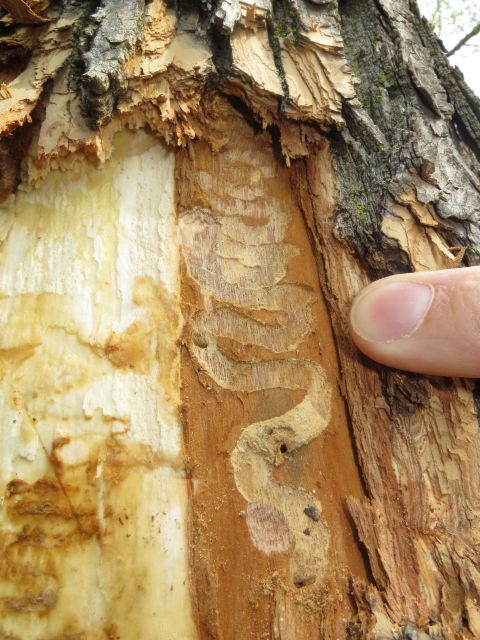Most phone calls I get start with “I think my trees are dying”. No one likes to look up and see something wrong with their trees. I usually start by reassuring people that there are varying degrees of unhealthy trees and they don’t all end in tree death. However, in order to diagnose anything, we need to solve the mystery of what is affecting the trees. I don’t find it particularly useful to start listing all the things that could be killing your trees, so this blog will focus on the questions you can be prepared to answer to help professionals solve the mystery.
There are three basic questions you can answer before you call:
1) what is the tree,
2) what trees are affected,
3) what part of the tree(s) looks unhealthy?
There are insects and diseases that only affect one type of tree, for example oak wilt only affects oak. So, knowing what the tree is can quickly eliminate some potential culprits. We have several resources for learning how to identify your trees, along with a simple key on this website: https://woodlandinfo.org/tree-and-invasive-plant-identification/. By the way, this is one of the best and easiest ways for landowners to start learning about their woods, by identifying trees.
When you are identifying the tree, look at the surrounding trees and see whether others around that one tree are also looking unhealthy. If they are, determine whether they are also the same tree type or not. How does this play out? Well, if every oak tree that you see doesn’t look good, but the rest of the trees look okay… that leads us down one path. However, if pine and oak trees are both not looking healthy, then we are looking for a different cause.
Notice where on the tree you are seeing issues. Look at the leaves, branches, trunk/bark, and down near the roots. You are looking for what we refer to as signs and symptoms of what is wrong with the tree. A sign is the evidence of the pest or disease itself. Examples include:
- An insect in egg, larval, or adult form.
- An insect’s damage: bark with holes, tunnels in the trunk of the tree, leaves that are being chewed
- Signs of disease: galls on branches or trunk, spots on leaves, fungal fruiting bodies growing from roots or trunk.

Hemlock woolly adelgid (credit: WI DNR) 
Fruiting bodies of a root disease (credit: USDA Forest Service , USDA Forest Service, Bugwood.org)
Symptoms are what the tree does in response to something attacking it. Examples include:
- Leaves are wilting, changing color, or falling off
- Branches or trunk with a Sheperd’s crook, cankers, oozing sap

Sheperd’s crook (Manfred Mielke, USDA Forest Service, Bugwood.org)


One other note is that there are some abiotic (non-living) causes of tree health issues. We’ve seen trees along roads and highways affected by road salt spray or other chemical spray. Drought, wind, hail, flooding, and sunscald can affect tree health as well. We usually explore this option when poor tree health isn’t limited to one type of tree. These abiotic issues can stress trees that are then attacked by insects or diseases that can sense that weakness.
I’d like to end this article on a more positive note. Although we can’t always prevent an insect, disease or weather event, there are ways to minimize the impact of all these stressors on your woods. Healthy trees and woods are better able to withstand these stressors in the long run, and there are actions you can take to improve the health. Our new publication, “Protect Your Woods For Tomorrow” provides scorecards for assessing forest health risks on your property. For each risk identified, the publication provides actions you can take to improve the resilience of your woods.
